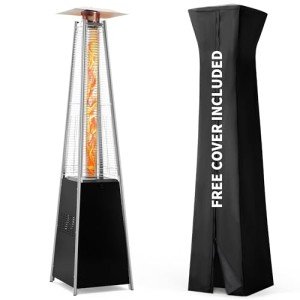What The Heck Is Best Buy Fireplace Heater?
Finding the Perfect Fireplace to Buy: A Comprehensive Guide
Fireplaces have long been a symbol of warmth, convenience, and home. Today, they serve not just as functional heating sources however also as striking style aspects that raise the visual of any home. With Fireplaces And Stove of designs, fuels, and technological functions, purchasing a fireplace can feel overwhelming. In this guide, we will check out numerous kinds of fireplaces, the considerations for getting, and the advantages of having one in your home.
Kinds of Fireplaces
Before diving into how to pick the best fireplace, it's vital to understand the different types readily available on the marketplace. Below is a detailed comparison table of the most common kinds of fireplaces:
Type
Fuel Source
Setup
Maintenance Needs
Normal Cost Range
Wood-Burning
Wood
Requires chimney
High; routine cleansing
₤ 2,500 – ₤ 5,000
Gas Fireplace
Natural gas or lp
Vented or ventless
Medium; yearly checkup
₤ 1,500 – ₤ 4,000
Electric Fireplace
Electrical energy
Plug-in or built-in
Low; occasional cleaning
₤ 200 – ₤ 3,500
Pellet Stove
Wood pellets
Requires venting
Medium; routine cleansing
₤ 2,000 – ₤ 4,000
Ethanol Fireplace
Bioethanol
No venting required
Very low; tidy glass routinely
₤ 300 – ₤ 2,500
1. Wood-Burning Fireplaces
Wood-burning fireplaces are the traditional choice, stimulating a conventional ambiance. However, they need appropriate chimney installation and upkeep to make sure security. The expense can be on the higher side due to these needs.
2. Gas Fireplaces
Gas fireplaces use benefit and efficiency. They can be vented or ventless, depending on your space. While gas choices tend to be costlier upfront, they normally require less upkeep than wood-burning designs.
3. Electric Fireplaces
Electric fireplaces are flexible and can be positioned anywhere in the home, as they just need a power outlet. They can easily function as an extra heating source and come in numerous styles, from wall-mounted to freestanding systems.
4. Pellet Stoves
Pellet stoves burn compressed pellets made from wood and other products. They require a power supply for operation and typically have a greater initial cost however deal terrific fuel effectiveness and ease of usage.
5. Ethanol Fireplaces
Ethanol fireplaces are modern and elegant, working without a chimney. They supply a clean-burning alternative for those who appreciate aesthetics over heat output. However, they might not appropriate for heating bigger locations.
Key Considerations When Purchasing a Fireplace
When choosing a fireplace, think about the following elements:
1. Home Size and Layout
- Open Spaces: Large open locations gain from effective systems like wood or pellet ranges.
- Smaller Rooms: Electric or ethanol models may be enough for intimate spaces.
2. Fuel Source
- Pick based upon ease of access to fuel types (wood, gas, electric) and your lifestyle (upkeep, benefit).
3. Heating Needs
- Identify the heating requirements for your space. Bigger fireplaces may be needed for bigger spaces.
4. Local Regulations
- Guarantee your fireplace adheres to regional building regulations and guidelines, as some districts might enforce restrictions on specific types.
5. Aesthetic Appeal
- Pick a design and finish that complements your home design, whether it's conventional, modern, or rustic.
Benefits of Having a Fireplace
The advantages of having a fireplace in your home are many. Here are some key benefits:
- Comfort and Coziness: Fireplaces create a warm atmosphere, ideal for events or peaceful nights.
- Increased Property Value: A well-placed and functional fireplace can enhance your home's market price.
- Alternative Heating Source: Fireplaces offer extra heating throughout cold weather, which can assist lower heating costs.
- Visual Centerpiece: Fireplaces frequently work as the centerpiece in a space, including character and elegance to the home.
Frequently asked question Section
Q1: How do I figure out the very best fireplace for my home?
A: Assess your heating requirements, area size, chosen fuel source, and visual preferences to pick the best option.
Q2: Are gas fireplaces safer than wood-burning ones?
A: Gas fireplaces typically have less safety issues due to their regulated combustion and simpler maintenance, however correct installation is still essential.
Q3: Can I set up a fireplace myself?
A: While electric fireplaces are appropriate for DIY setup, gas, and wood-burning designs need expert installation to make sure safety and compliance with regional codes.
Q4: What is the maintenance needed for each kind of fireplace?
A:
- Wood: Regular cleaning of ash and creosote from chimneys.
- Gas: Annual check-up to check venting and connections.
- Electric: Dusting and examining for electrical problems.
- Pellet: Cleaning out pellets and ash sometimes.
- Ethanol: Simple cleaning of the burner and glass.
Q5: How much will my heating costs increase with the addition of a fireplace?
A: This can vary considerably. Fireplaces typically supply supplementary heating and may reduce your general expenses, however specifics depend upon use and insulation.
Choosing the ideal fireplace to buy requires comprehending your home's requirements and personal choices. Whether you choose the timeless charm of a wood-burning fireplace or the modern-day convenience of an electrical unit, there's a fireplace that can fit perfectly into your home. By considering the numerous types, setup requirements, and benefits discussed in this guide, you're well-equipped to make an informed option and delight in the warmth and style that a fireplace can give your living environment. Happy fireplace shopping!
